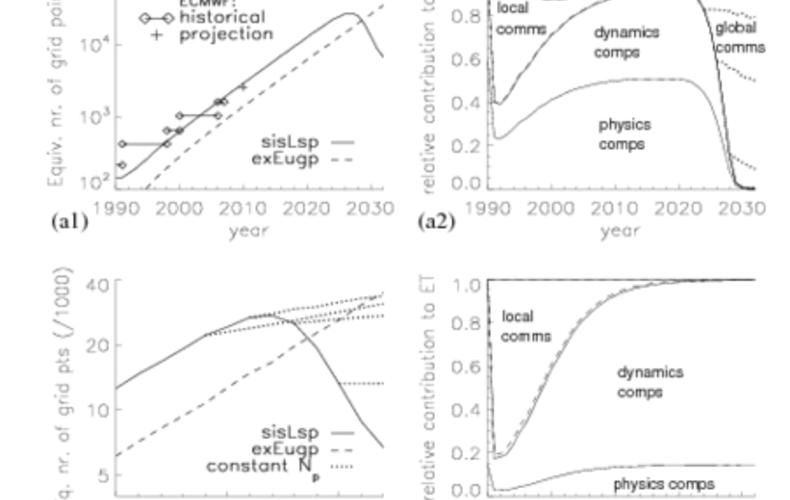
For two formulations of currently usual numerical weather prediction models the evolution of maximum achievable resolution is predicted for the next 24 years. One of those formulations is the semi-implicit, semi-Lagrangian and spectral (sss) method as used eg by ECMWF. This formulation requires global communications. The other one is the explicit, Eulerian, grid point (eEg) formulation, requiring local communications only. The evolution prediction is based on an analysis of computation and communication requirements and on extrapolation of computation and communication performance of future computer systems. The main result is that model performance will continue to grow, approximately exponentially, for another two decades. After that, however, the finite speed of light will make global communications very inefficient. As a result, towards the end of our investigation period, sss models lose their current advantage, which derives from their lower compute operations count, and eEg models start to perform better, because they do not need global communications. The extrapolation of computer performance into the future requires quite a few assumptions on future configurations. Our results are not very sensitive to those assumptions, except if the configuration parameters are chosen to model a Grid computer. On a Grid computer, even models without global communication requirements show some performance loss due to the finiteness of the speed of light towards the end of the investigation eriod.
GJ Cats. 24 More Years of Numerical Weather Prediction: A Model Performance Model
KNMI number: WR-08-01, Year: 2008, Pages: 34